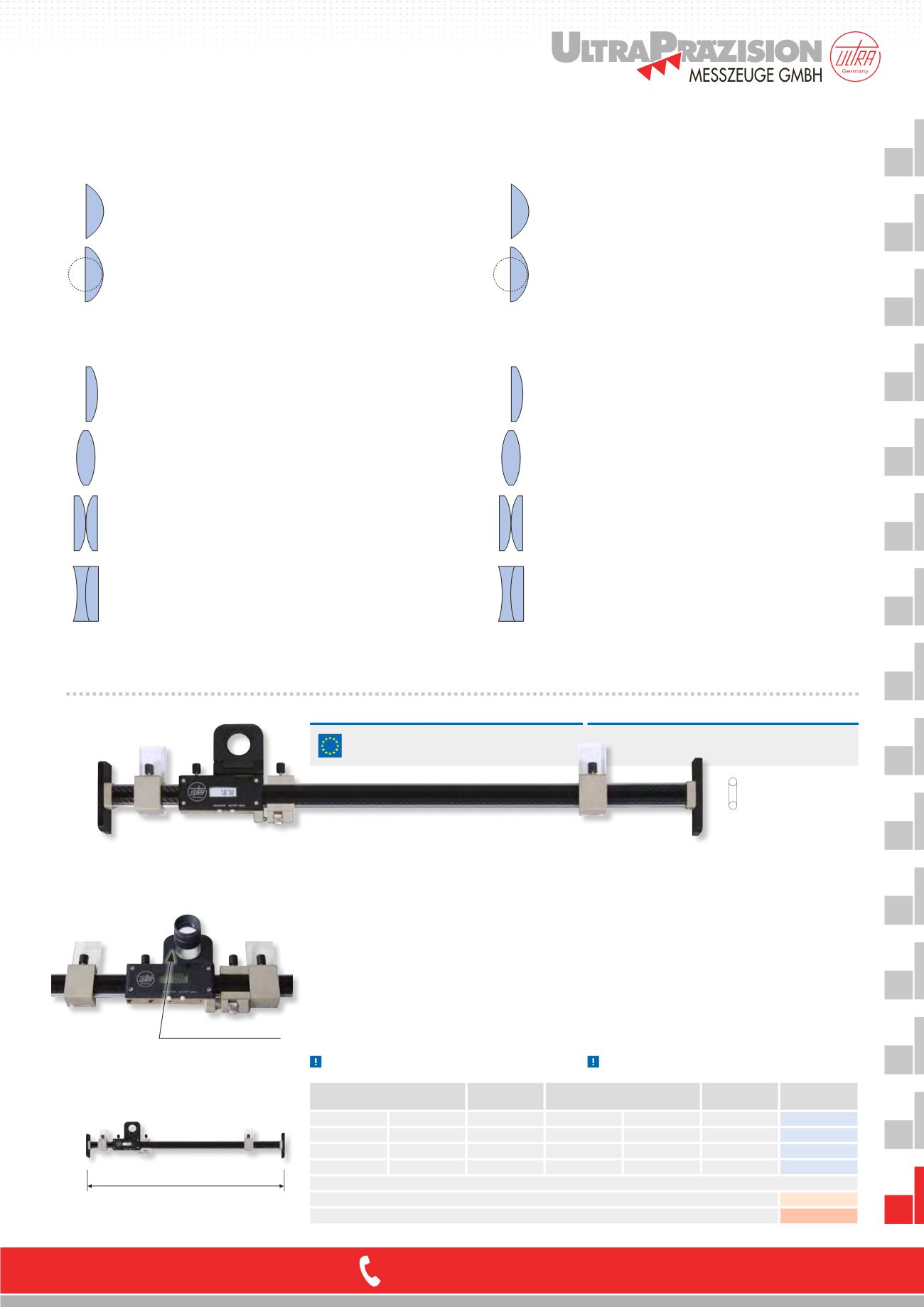
+49 (0) 60 21 42 999 00
15.9
1
2
3
4
5
6
7
8
9
10
11
12
13
14
15
Die Flächen einer Linse können konvex, eben (plan) oder konkav sein.
In der Regel werden sphärische Linsen mit folgenden unterschiedlichen
Linsengeometrien verwendet:
Sphärische Linsen
haben in Ihrer Krümmung einen einheitlichen
Radius, dies führt zu leichten Verzerrungen der Abbildung im
Randbereich.
Asphärische Linsen
haben unterschiedliche Krümmungen (keinen
einheitlichen Radius) und deshalb eine deutlich bessere Abbildungs-
qualität im Randbereich.
Plankonvexe Form
Lichtsammelnde Wirkung, eine Fläche ist plan die andere ist nach
außen gewölbt.
Bikonvexe Form
Bessere Abbildungsqualität und höhere Vergrößerung als plankon-
vexe Linsen. Beide Flächen sind nach außen gewölbt.
Aplanatische Form
Randscharfe und verzerrungsfreie Abbildung. Zwei plankonvexe
Linsen sind mit den gewölbten Flächen zueinander angeordnet.
Achromatische Form
Farbechte Abbildungen. Unterdrückt störenden Farbsaum am Rand-
bereich. Eine plankonvexe und eine bikonkave Linse sind hintereinan-
der angeordnet.
Lenses, definitions
Fundamentally, the spherical and aspherical lenses
are distinguished.
Linsen, Begriffserklärungen
Grundsätzlich wird zwischen sphärischen und asphärischen Linsen
unterschieden.
Spherical lenses
have a uniform radius in their curve,
which lead to slight distortion of the image in the
border area.
Aspherical lenses
have differing curves (no uniform radius)
and therefore have a clearly better image quality
in the border area.
Plano-convex shape
Light collecting effect, one surface is plane and the other
is curved towards the outside.
Biconvex shape
Better image quality and higher magnification than
plano-convex lenses. Both surfaces are curved towards the outside.
Aplanatic shape
Sharp edge and distortion-free image. Two plano-convex
lenses are arranged together with the curved surfaces.
Achromatic shape
Colour-fast images. Suppresses disturbing colour fringe
in the border area. A plano-convex and a biconcave lens
are arranged one after the other.
Dioptrienzahl, Vergrößerung
Die Dioptrienzahl (D) bezeichnet das Lichtbrechungsvermögen einer
Linse. Der Vergrößerungsfaktor (V) errechnet sich nach folgender
Formel: V = ( D / 4 ) + 1
Dioptre number, magnification
The dioptre number (D) specifies the refractory property of a lens.
The magnification factor (V) is calculated according to the
following formula: V = ( D / 4 ) + 1
The surfaces of a lens can be convex, flat (plane)
or concave. Generally, spherical lenses are used with the
following differing lens geometries:
Digital-Längenmaßstab CARBON mit Lupe
Digital length rule CARBON with magnifier
dqefglmt
a
a
Werksnorm
a
a
Zum Messen von Abständen auf Flächen
a
a
Schutzart IP 54
a
a
Feststellschraube
a
a
Stange aus Kohlefaser 30x10mm,
Führungselemente aus verchromtem Stahl
a
a
Extrem geringes Gewicht, hohe Formstabilität
a
a
großes LCD Display
a
a
Lieferung im Holzetui mit Lupe
Funktionen:
a
a
Ein/Aus, mm/inch Umschaltung,
±
Preset Funktion,
O-Punkt an jeder Position, Hold Funktion,
Datenausgang Opto
Handhabung siehe Seite 11.30
a
a
Works standard
a
a
To measure a distance on a surface
a
a
Protection class IP 54
a
a
Locking screw
a
a
Carbon fibre bar 30x10mm,
guiding elements made of chromed steel
a
a
Extremely low weight, high strength of shape
a
a
Large LCD display
a
a
Delivered in wooden box incl. magnifier
Functions:
a
a
On/Off, mm/inch commutation,
±
preset function,
Zero setting at any position, Hold function,
Data output Opto
Operation see page 11.30
Größere Messbereiche auf Anfrage.
Larger measuring ranges on request.
j
mm inch
A
mm
a
mm inch
i
kg
s
450
18
720
0,01
.0005
1,00
1854 601
750
30
1020
0,01
.0005
1,90
1854 602
1150
45
1420
0,01
.0005
3,00
1854 603
1450
57
1720
0,01
.0005
3,70
1854 604
> 1450mm auf Anfrage / on request
Datenkabel RS232 (2m) / Data cable RS232 (2m)
1850 203
Datenkabel USB (2m) / Data cable USB (2m)
1850 204
Stangenquerschnitt
Bar cross section
30x10mm
A
Halter für Lupe umklappbar.
Holder for magnifier fold-away.
No. 1854 6..


